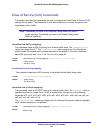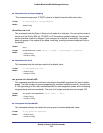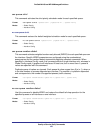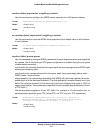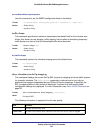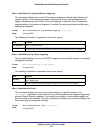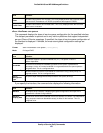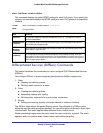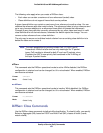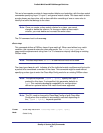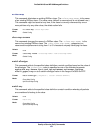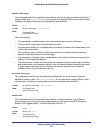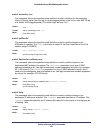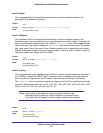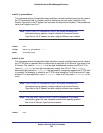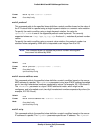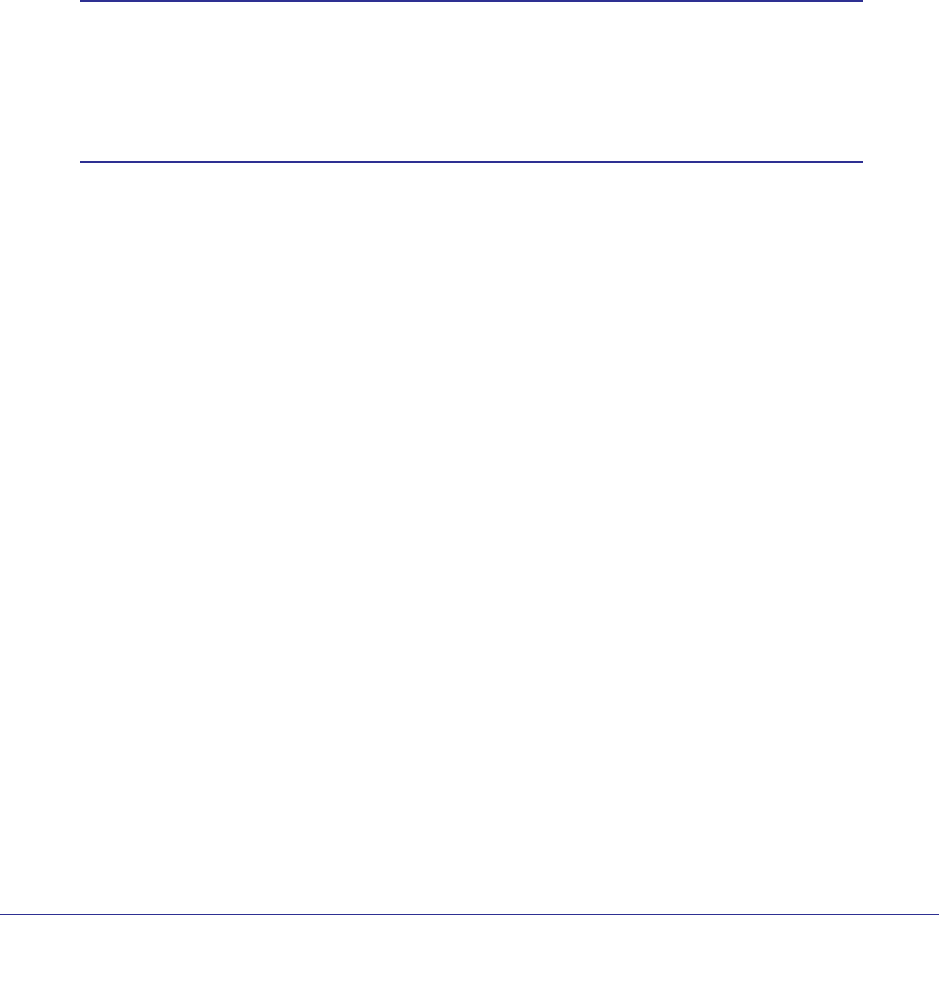
Quality of Service (QoS) Commands
452
ProSafe M4100 and M7100 Managed Switches
The following rules apply when you create a DiffServ class:
• Each class can contain a maximum of one referenced (nested) class
• Class definitions do not support hierarchical service policies
A given class definition can contain a maximum of one reference to another class. You can
combine the reference with other match criteria.
The referenced class is truly a reference and
not a copy, because additions to a referenced class affect all classes that reference it.
Changes to any class definition currently referenced by any other class must result in valid
class definitions for all derived classes, otherwise the switch rejects the change. You can
remove a class reference from a class definition.
The only way to remove an individual match criterion from an existing class definition is to
delete the class and re-create it.
Note: The mark possibilities for policing include CoS, IP DSCP, and IP
Precedence. While the latter two are only meaningful for IP packet
types, CoS marking is allowed for both IP and non-IP packets, since
it updates the 802.1p user priority field contained in the VLAN tag of
the layer 2 packet header.
diffserv
This command sets the DiffServ operational mode to active. While disabled, the DiffServ
configuration is retained and can be changed, but it is not activated. When enabled, DiffServ
services are activated.
Format diffserv
Mode
no diffserv
This command sets the DiffServ operational mode to inactive. While disabled, the DiffServ
configuration is retained and can be changed, but it is not activated. When enabled, Dif
fServ
services are activated.
Format no diffserv
Mode
DiffServ Class Commands
Use the DiffServ class commands to define traffic classification. To classify traffic, you specify
Behavior Aggregate (BA), based on DSCP and Multi-Field (MF) classes of traffic (name,
match criteria)
Global Config
Global Config



